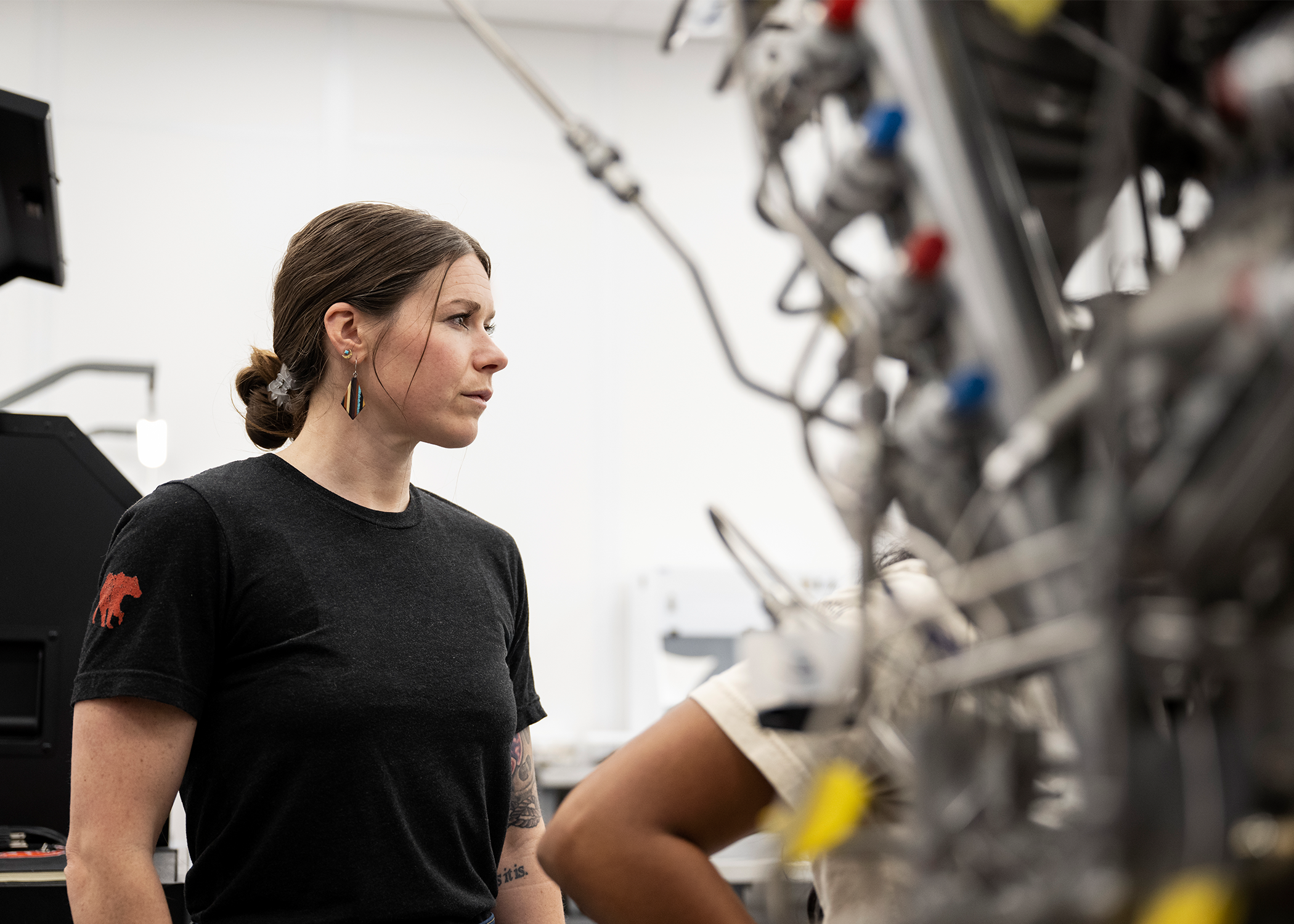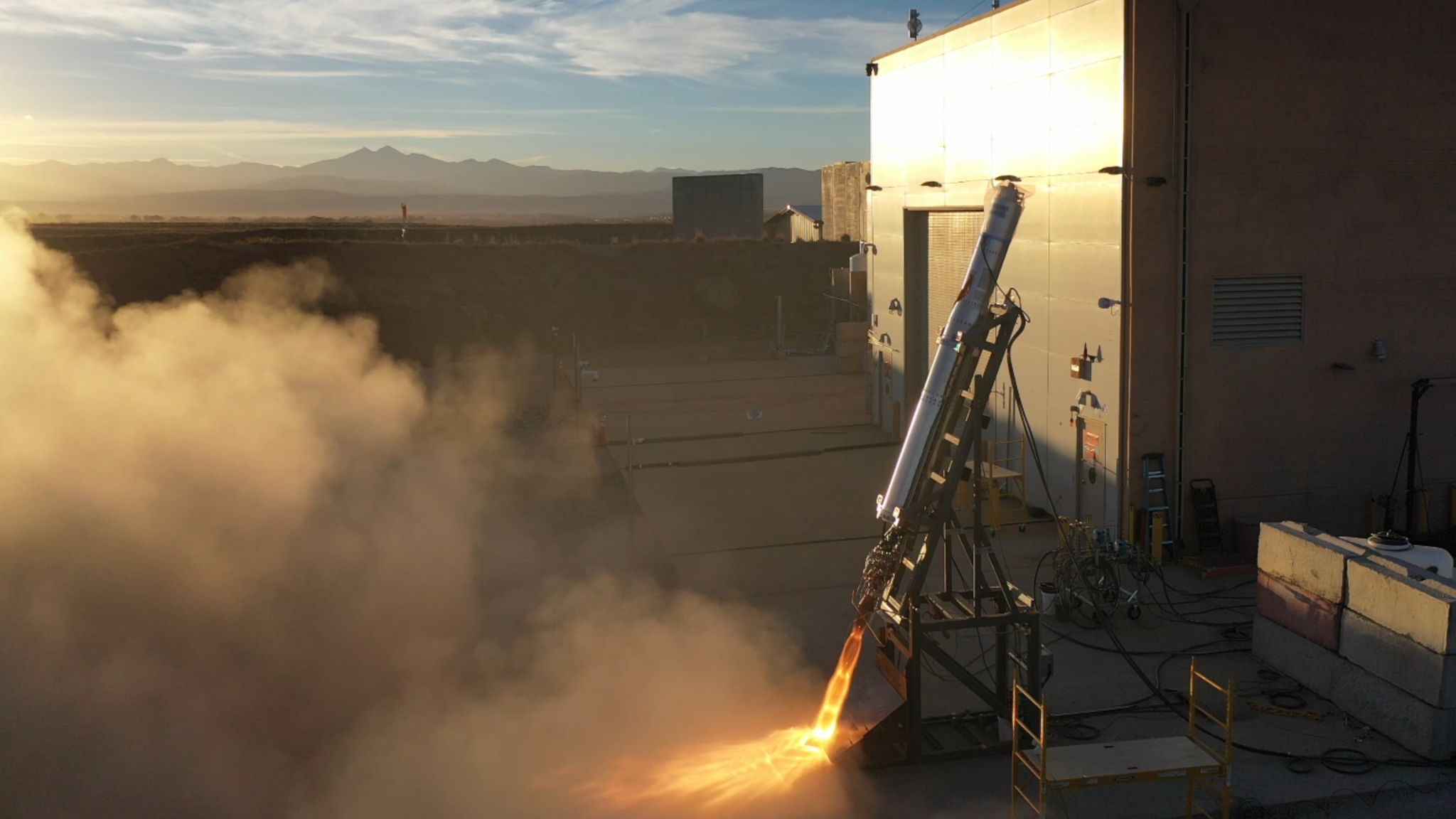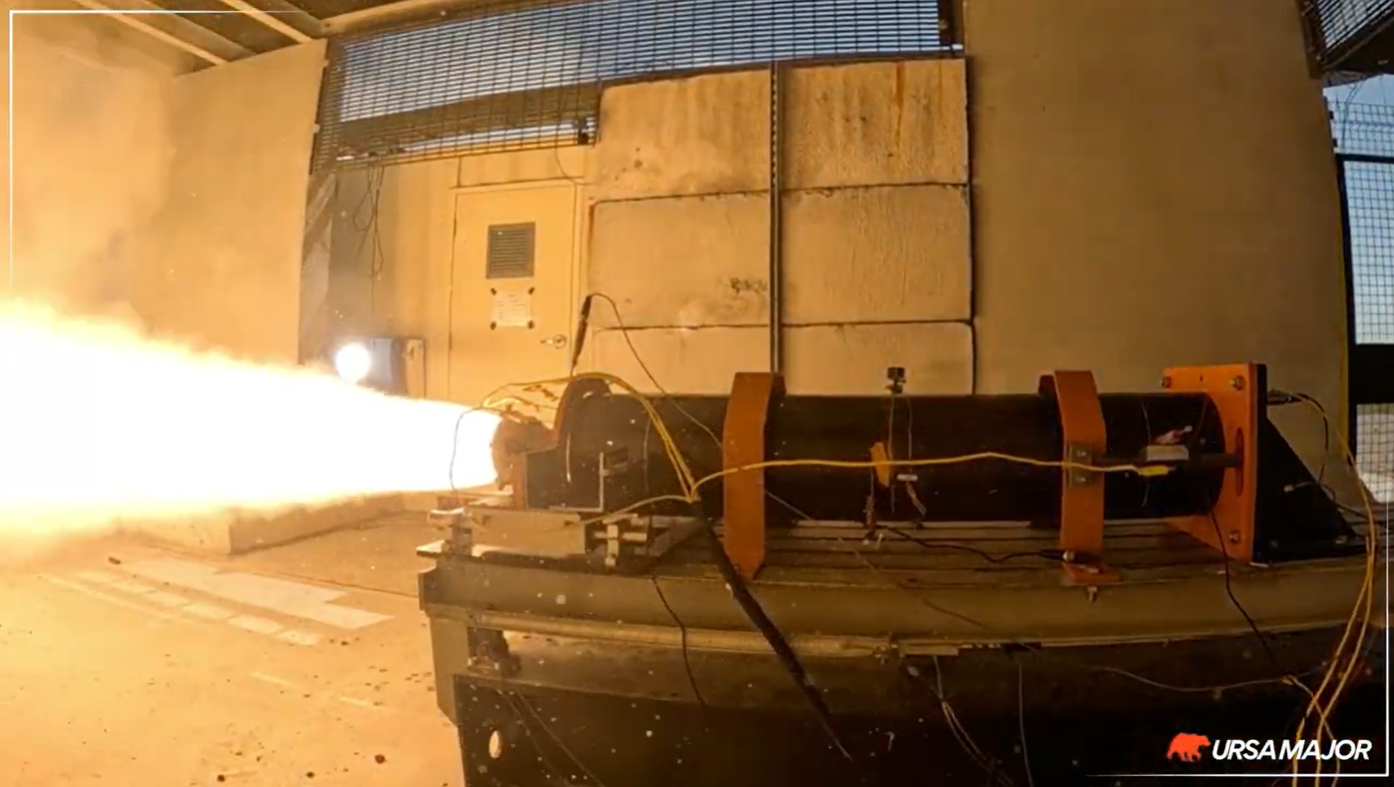
How Ursa Major and Palantir are Solving Manufacturing Challenges at Hypersonic Speeds

At Palantir’s AIPCon, Ursa Major’s Vice President of Operations Nick Doucette and Director of Operations Nancy Cable shared a story that’s been building behind the scenes: the creation of a digital manufacturing capability that keeps pace with the speed and complexity of modern defense programs.
As Ursa Major expands its propulsion portfolio from hypersonic engines and vehicles to solid rocket motors and space-based defense, we’re investing not just in physical infrastructure, but in the digital foundation that enables it. With Palantir Warp Speed, we’ve developed an AI-native, Ontology-driven manufacturing execution system (MES) that gives our teams near real-time visibility, traceability, and decision-making power across every stage of production.
For a company that designs, tests, and builds liquid rocket engines in months, that kind of capability isn’t just helpful. It’s required.
Nick Doucette described the challenge clearly during Backstage Pass at AIPCon: “The combination of hardware complexity, advanced manufacturing, and DoD expectations means legacy tools alone can’t always keep up. We needed to get the right information to the right people at the right time to build the right hardware.”
What we’ve built with Palantir is a manufacturing system that reflects how we operate in the real world. Powered by Palantir’s Ontology and AIP, it behaves more like a digital nervous system than a static data platform by connecting the dots between engineering decisions, shop floor execution, and supply chain visibility.
Cable gave a demonstration during the Champions Relay session at AIPCon that showed the Ontology-driven approach to MES in action: she walked through a typical manufacturing scenario and showed the audience how the AI-configured Assembly & Testing Assistant automatically generates complete digital workflows directly from engineering drawings and PDFs, which reduces weeks of manual configuration and improves the new product launches.
The real breakthrough isn’t just automation—it’s intelligence. The AIP-powered Quality Management system goes beyond flagging defects; it analyzes metrics across historical builds and finds patterns of what is frequently flagged, prompting engineers to consider design changes or threshold adjustments. Every disposition and root cause analysis feeds back into the Ontology, creating a closed-loop learning system.
Just as important, this system operates a unified source of information rather than a data silo. Manufacturing orders sync with MRP logic to provide rapid visibility into inventory levels, supplier lead times, and potential bottlenecks. If other systems flag an issue during test, quality holds are triggered instantly in MES. Engineering changes propagate through workflows in near real-time, ensuring operators always work from the most current instructions.
Now, when something changes upstream, such as a component design revision, our MES automatically updates workflows, flags quality gates, and communicates directly with procurement and production teams. Engineering changes appear in live instructions in near real-time. SCADA data triggers quality holds the moment an issue arises. Inventory levels are visible and connected to manufacturing orders, helping us move proactively rather than reactively.
Nancy Cable spoke about how this impacts day-to-day operations. “We’re a hardware company. Eighty percent of our rocket engine components are 3D printed. That means we’re constantly scaling machines, building new fixtures, and updating tools. The physical infrastructure has to be supported by a digital layer that’s just as dynamic. When we need to build hundreds of engines, I need to know where every part is at any moment so we can make the best real-time decisions for quality and for our customers.”
This system gives us that clarity, connecting engineering data to factory operations in ways that makes manufacturing smarter, not just more automated. And it’s already producing results. In just a few months, the tools we’ve deployed with Palantir are projected to save 10,000 to 15,000 hours of engineering time annually. That’s time we can reinvest into new designs, faster iteration, and tighter feedback loops.
But more importantly, it empowers our people. Domain expertise is embedded directly into workflows. Operators get real-time guidance. Engineers spend less time troubleshooting miscommunication and more time solving hard problems. This enables teams to move faster, together to field and deliver the capabilities our nation demands.
This isn’t about replacing the systems we’ve relied on; it’s about unlocking their full potential through smarter integration and smarter tools. Now, our MES turns our complexity into a competitive edge.
Today, that capability is live across our propulsion programs. Tomorrow, it sets the stage for Ursa Major to move beyond propulsion into broader system delivery. As we scale up production, qualify new systems, and bring advanced capabilities into the field, this digital backbone will help us move at the pace the mission requires and fly faster.




